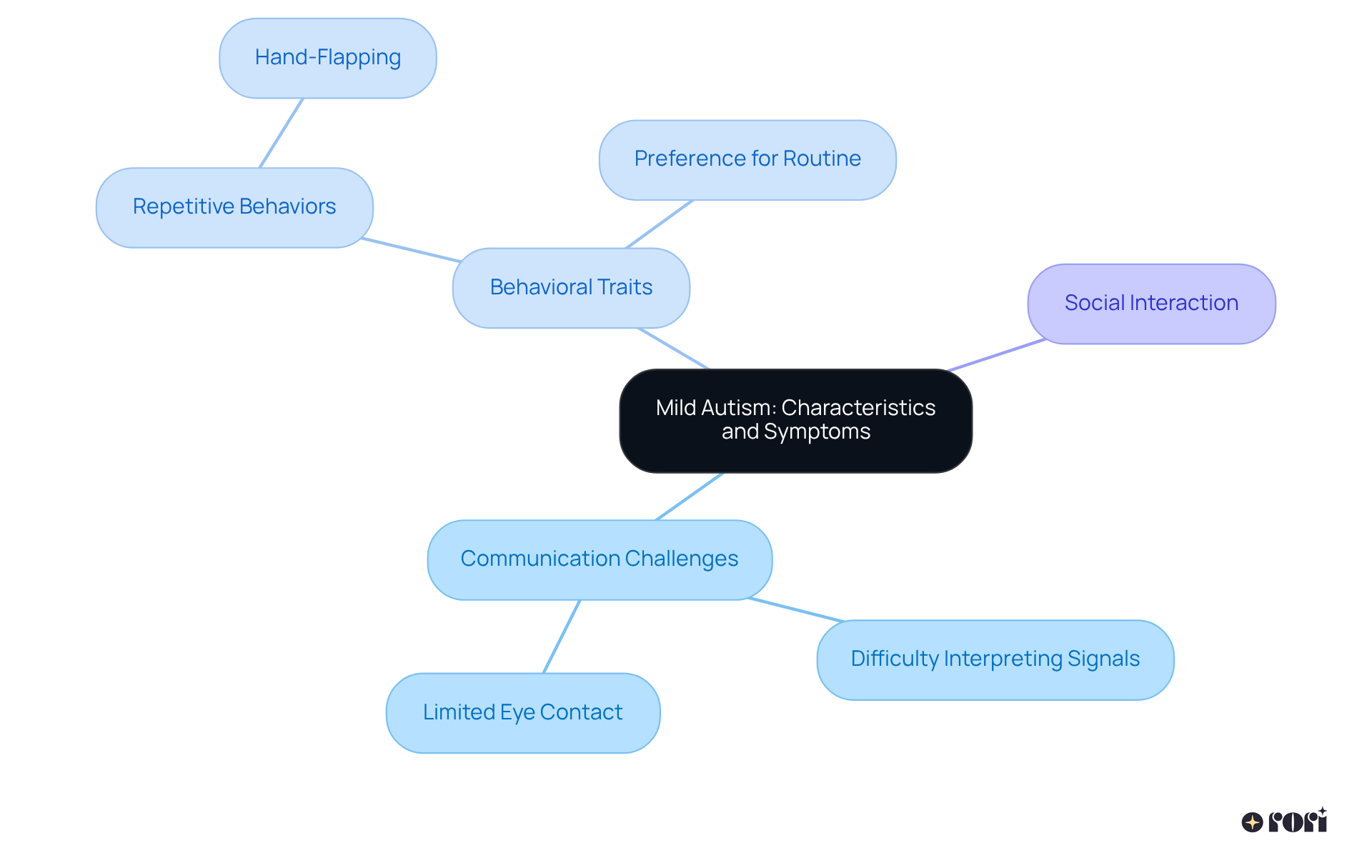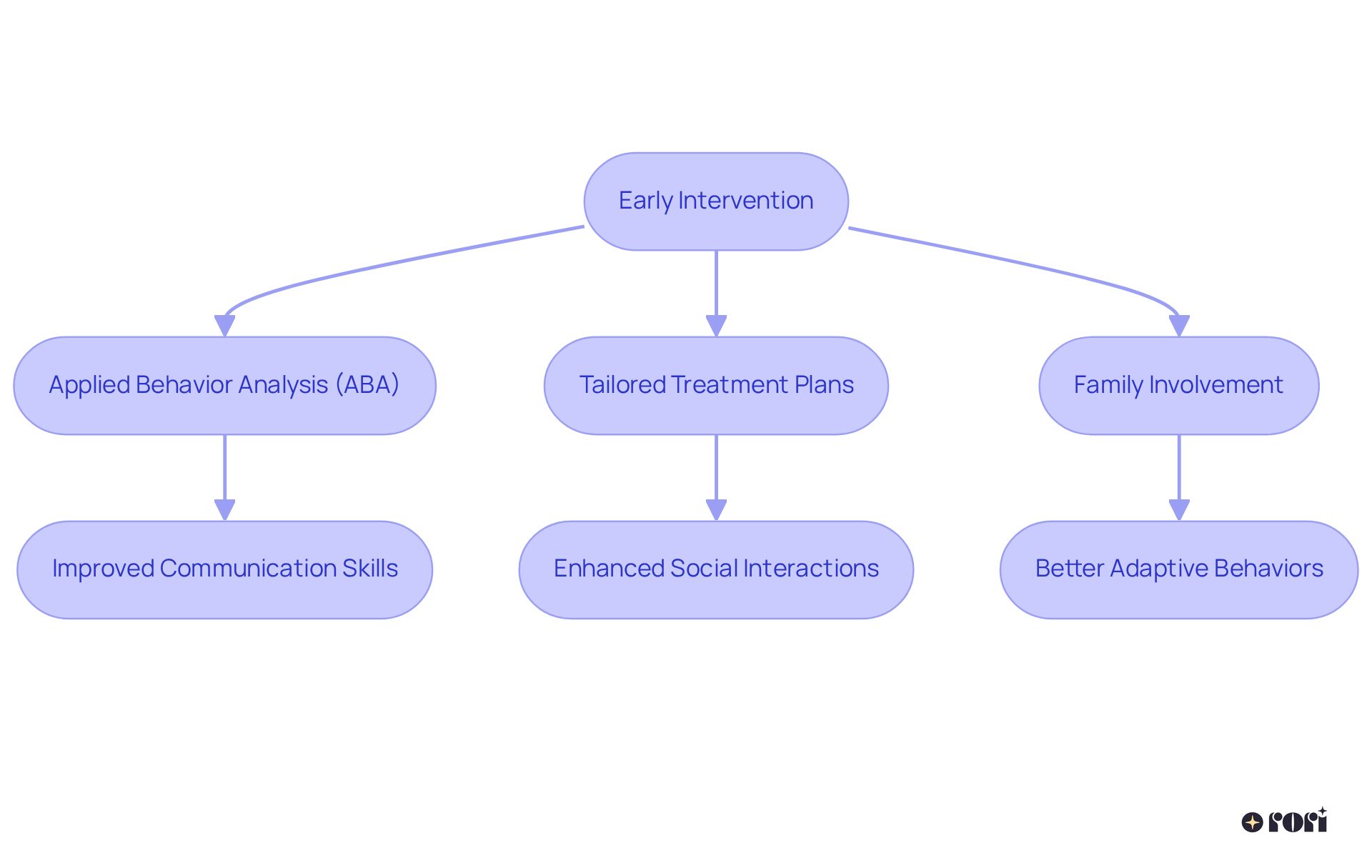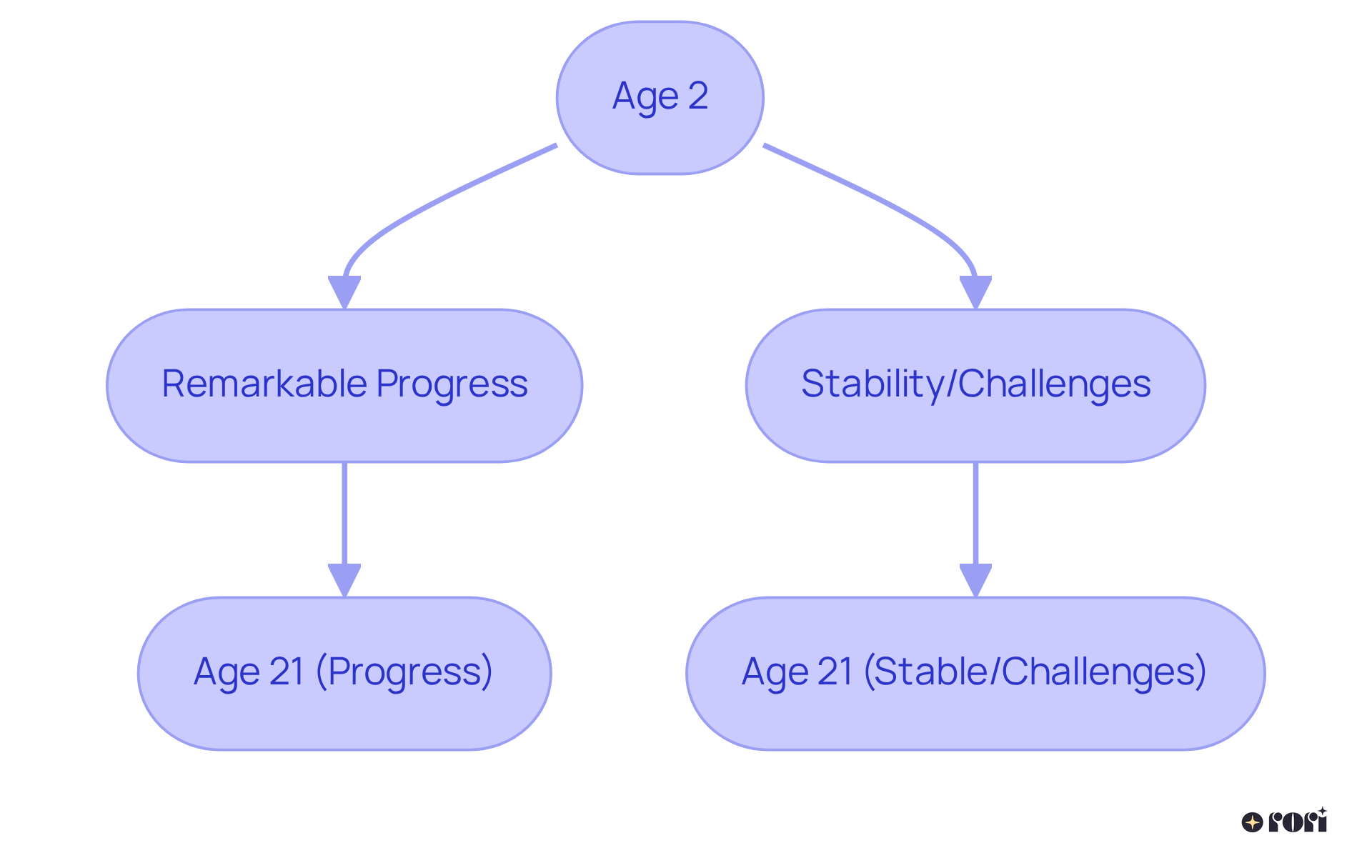Mild autism often shows signs of improvement as children grow, especially when influenced by early intervention, social experiences, and individual cognitive abilities. Research suggests that around 30% of children may display fewer symptoms by age six—pretty encouraging, right? Plus, longitudinal studies reveal that timely and personalized support can really boost developmental outcomes for many individuals over time.
Let’s explore this together! As parents, it’s important to know that you’re not alone in this journey. Many families have witnessed positive changes through supportive measures. Remember, every child is unique, and with the right resources, they can thrive! We’re here to help you every step of the way!
Mild autism, often marked by subtle yet impactful traits, presents unique challenges in communication and social interaction. Did you know that research shows around 30% of children with autism may show fewer symptoms by age six? This leads us to wonder: does mild autism really improve as kids grow?
Let’s explore the factors that influence these developmental changes, the importance of early intervention, and the different paths individuals on the autism spectrum may take. Together, we can shed light on the complexities of growth and support for children with mild autism. We’re here to help you every step of the way!
Mild forms of Level 1 Autism Spectrum Disorder (ASD) can present unique challenges, especially in communication and interaction. You might notice your child having difficulty interpreting interpersonal signals, making limited eye contact, or showing a preference for routine. These traits can sometimes be subtle, but they can really impact daily life and social relationships.
For instance, children with mild developmental disorders may engage in repetitive behaviors, like hand-flapping or needing things to stay the same. It’s important to understand these characteristics, as they can help us provide the right support and interventions.
Remember, you’re not alone in this journey—many parents share similar experiences. Let’s explore this together and find ways to help your child thrive!

It's fascinating to see how characteristics related to autism can change throughout childhood! Research shows that about 30% of children with autism may actually show fewer signs by the time they reach age six, raising the question of whether mild autism gets better with age. For instance, a long-term study that followed kids from ages 2 to 21 aimed to determine if mild autism gets better with age and found that around 10% of them made significant improvements in their conditions. 🌟
These positive changes can happen for various reasons, like:
Understanding these developmental shifts is super important for parents and clinicians alike. It helps in setting realistic expectations and tailoring interventions that truly meet the needs of each child. Let’s explore this together and see how we can support our little ones on their journey!

As children grow older, it raises the question of whether mild autism does get better with age, which can be influenced by several key factors, especially the quality of early intervention services. 🌱 Research shows that early intervention can really boost communication, learning, and social skills—particularly when it starts before the age of three. For example, a 2023 study found that 37 percent of participants no longer met the diagnostic criteria for their condition by age seven, which raises the question of whether mild autism does get better with age, highlighting the power of timely support!
Children with higher cognitive abilities, including those with higher IQs, often question whether mild autism gets better with age, as they see even greater reductions in ASD symptoms. This underscores the importance of personalized interventions that cater to each child's unique needs. Additionally, the use of technology-enhanced strategies, like those from Rori Behavioral Innovations Inc., plays a crucial role in crafting treatment plans that truly resonate with individual requirements and optimize outcomes.
By fostering supportive family and community environments—like addressing prenatal health and reducing toxin exposure—families and clinicians can create conditions that promote growth and development. Ultimately, this helps young individuals with developmental differences to thrive. Let’s explore this together! We’re here to help you every step of the way! 💖

Taking prompt action is key to shaping the developmental journey of youth with autism. Programs that use applied behavior analysis (ABA) therapy have shown great success in boosting communication skills, social interactions, and adaptive behaviors. Research indicates that young people who receive early and intensive intervention are more likely to achieve better outcomes in areas like education and social relationships. By tailoring treatment plans to meet each individual's unique needs, families can truly enhance their child's potential for growth and independence. Let’s explore this together!

Longitudinal studies have played a vital role in helping us understand how traits linked to autism develop from childhood into adulthood. For instance, one significant study followed around 300 kids from ages 2 to 21. It revealed that while some individuals showed remarkable progress, others faced stability or even challenges. This finding is quite enlightening—it suggests that the question of whether mild autism gets better with age is complex, as the way symptoms are expressed may change over time.
Understanding these different paths is so important for both clinicians and families. It allows everyone to adjust their approaches and expectations as children grow. Let’s explore this together! As we navigate these journeys, we can find ways to better support our loved ones and adapt to their evolving needs.

Mild autism, especially Level 1 Autism Spectrum Disorder, brings its own set of challenges that can change as time goes on. It's so important for parents and caregivers to understand whether these challenges might lessen with age. Many children with mild autism see significant improvements as they grow, thanks to early interventions, social experiences, and their unique development.
Early intervention programs, particularly those using applied behavior analysis (ABA), can lead to wonderful enhancements in communication and social skills. Research shows that a good number of children may not meet the diagnostic criteria for autism by a certain age, highlighting just how crucial timely and tailored support can be. Plus, we can't forget about cognitive abilities and environmental factors—they play a big role in the different paths individuals with autism may take.
It's essential to recognize the potential for growth and change. Families, educators, and clinicians need to stay adaptable, creating supportive environments that nurture development. By focusing on early and personalized interventions, we can give children with mild autism a much better chance to thrive, paving the way for a brighter future. The journey might be complex, but with the right tools and understanding, we can make significant strides in improving the lives of those on the autism spectrum. Let’s explore this together!
What are the characteristics of mild autism?
Mild autism, or Level 1 Autism Spectrum Disorder (ASD), can manifest in difficulties with communication and social interaction. Common traits include challenges in interpreting interpersonal signals, limited eye contact, a preference for routine, and repetitive behaviors such as hand-flapping.
How do symptoms of autism change throughout childhood?
Research indicates that symptoms of autism can change as children grow. About 30% of children with autism may show fewer signs by age six. A long-term study found that approximately 10% of children with mild autism made significant improvements from ages 2 to 21.
What factors contribute to improvements in autism symptoms?
Improvements in autism symptoms can be influenced by several factors, including early intervention, social experiences, and the natural process of growing up.
Why is it important to understand the characteristics of mild autism?
Understanding the characteristics of mild autism is crucial for providing appropriate support and interventions. Recognizing these traits can help parents and caregivers tailor their approach to meet the needs of their child effectively.
How can parents support children with mild autism?
Parents can support children with mild autism by understanding their unique challenges, seeking early intervention, and creating a supportive environment that encourages social interactions and routine.